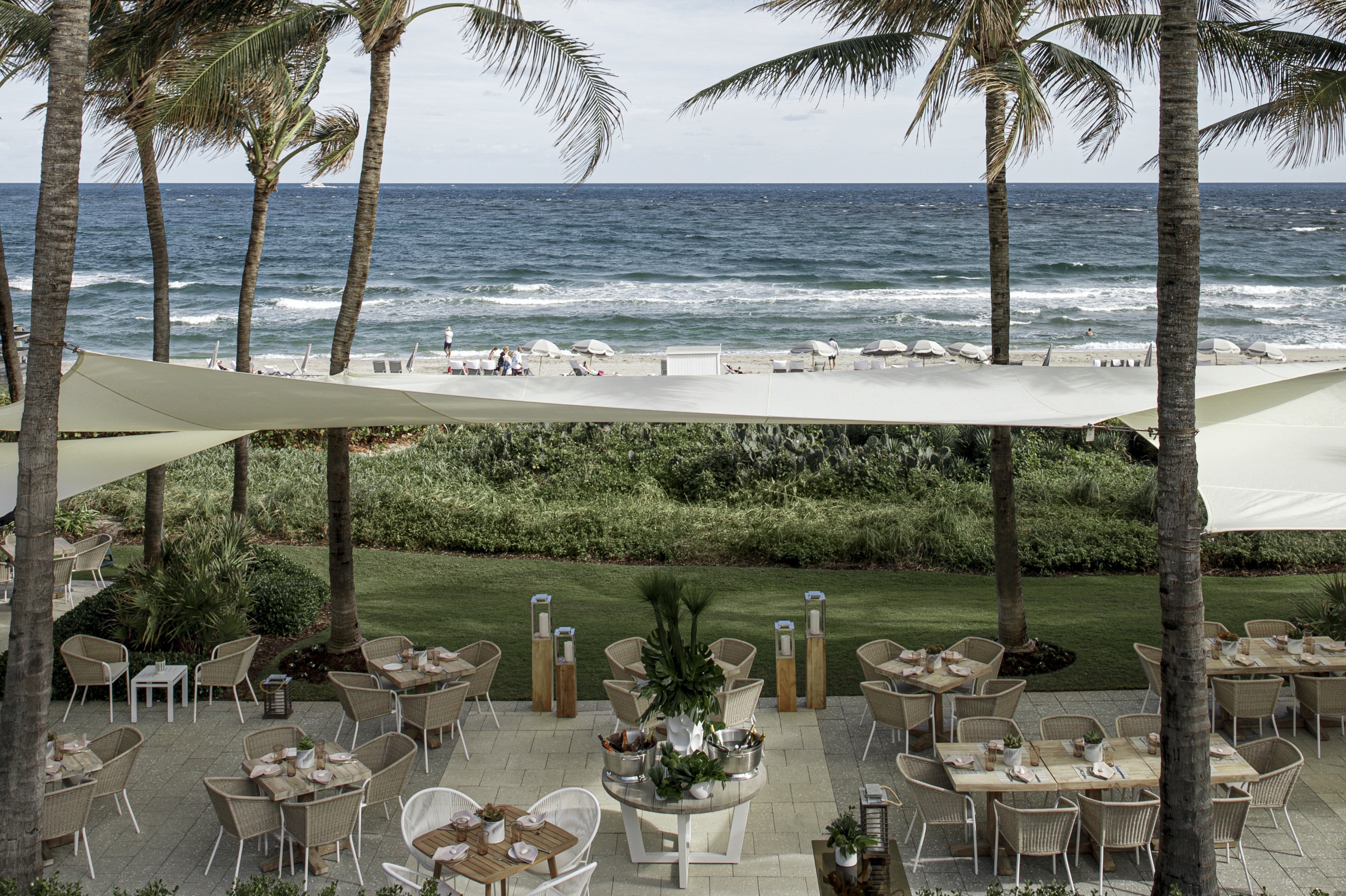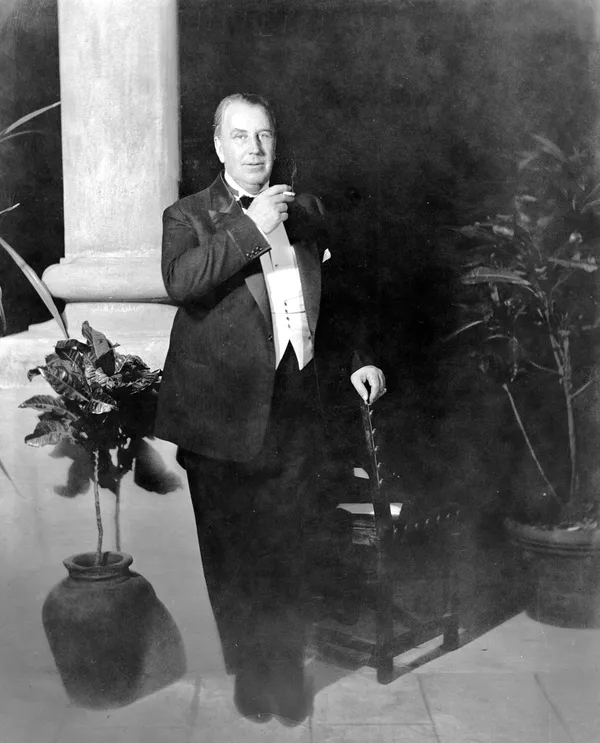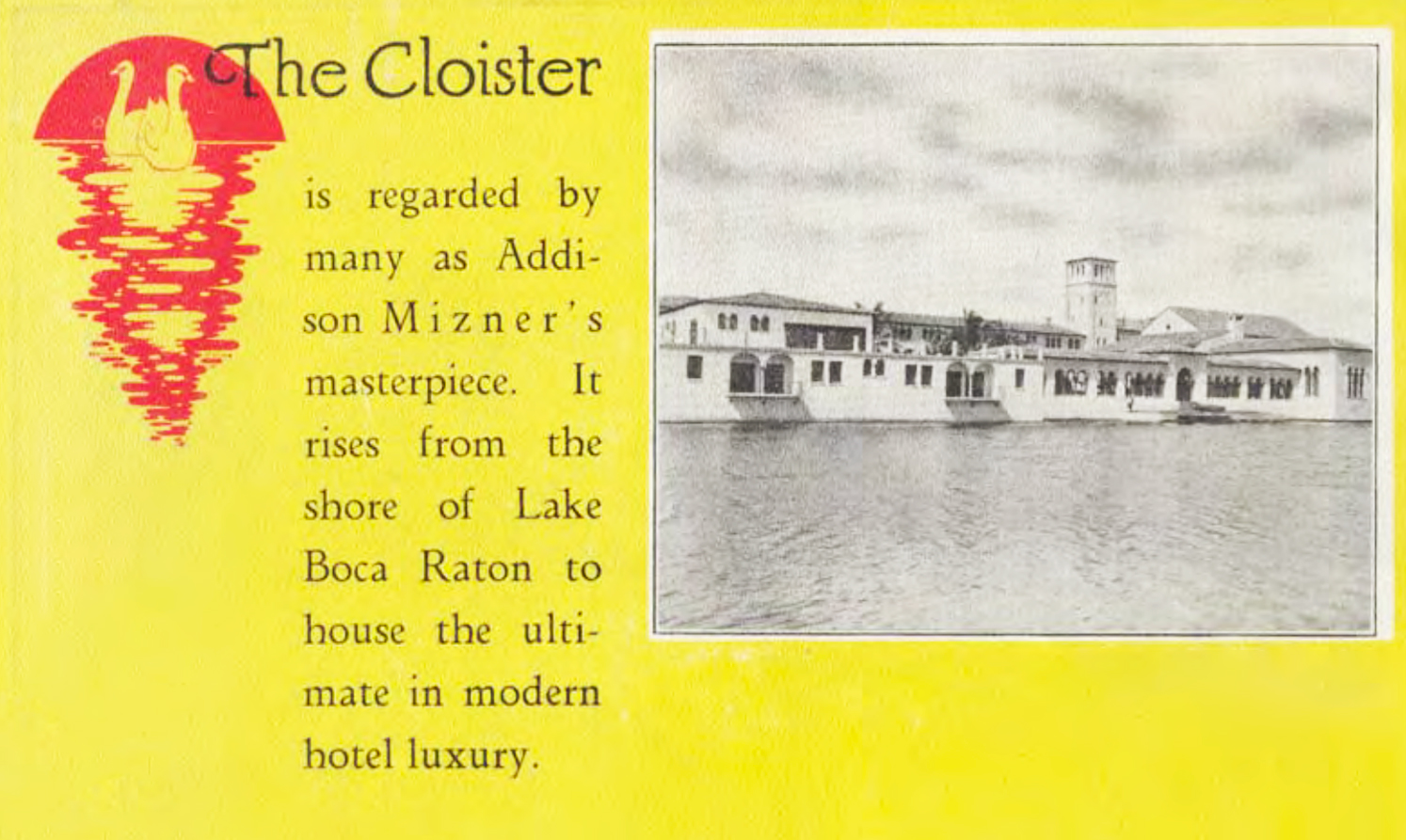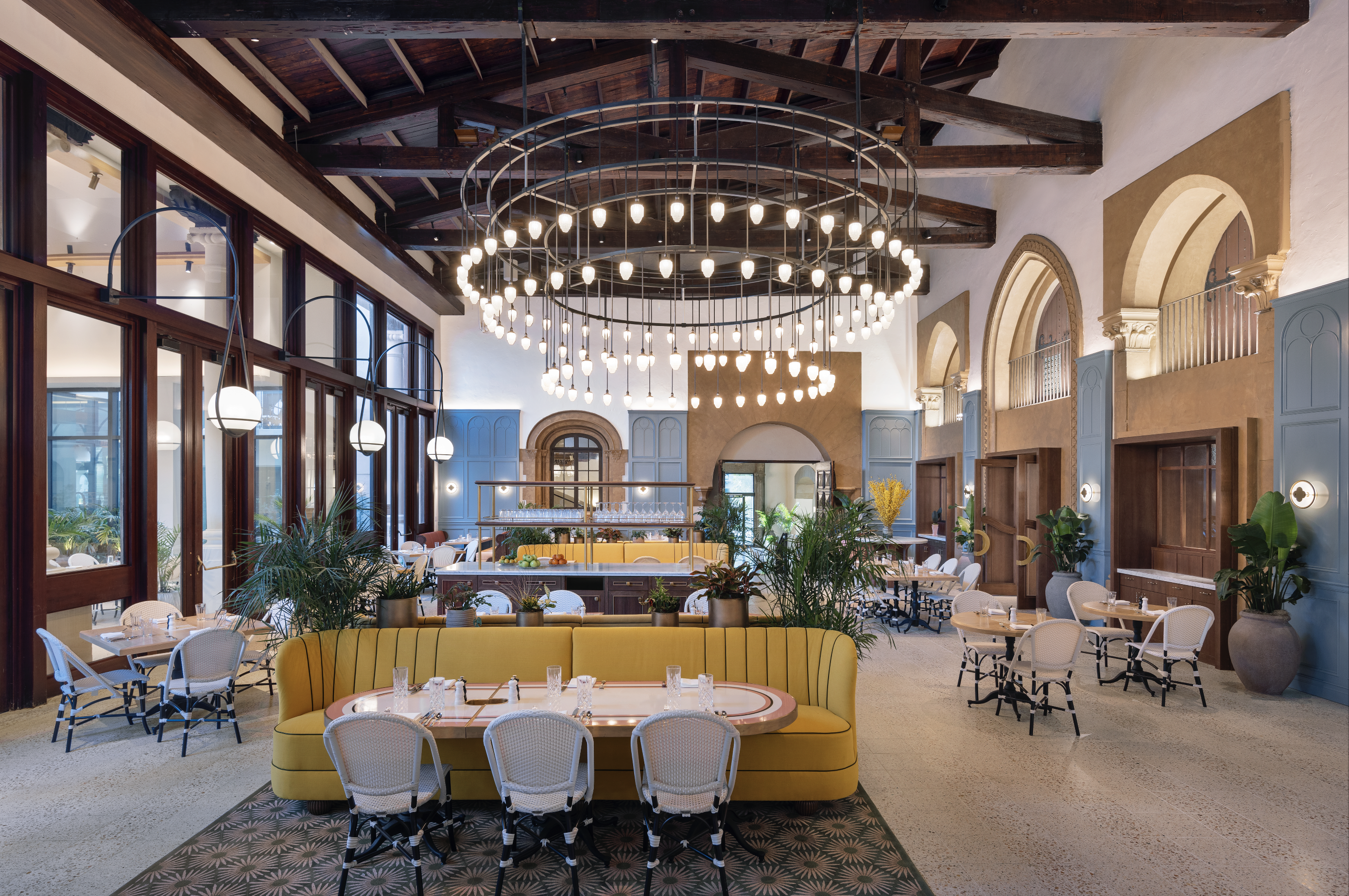
Boca Raton’s Storied Resort Gets a High-Fashion Reboot

Emerging from a $200M facelift, the Old Florida landmark, designed by Addison Mizner in 1926, is now a classic of a different color.
What was once the Ritz-Carlton Cloister Inn and, more recently, the Waldorf Astoria-run Boca Raton Resort & Club wants you to know it’s not your grandparents’ hotel anymore.
For starters, it’s now simply — and confidently — The Boca Raton, sans the “resort and club.” The historic main building, called the Cloister, has spilled its 60s pink-lemonade exterior, reverting to a gleaming coastal white. Two classes of accommodations, the mid-century Bungalows and the all-suites Yacht Club — the latter reserved for 18+ guests only — showcase the latest upgrades. Along with the Beach Club, located across the Intracoastal from the main property, and the 1969-built tower (which remains pink), today’s Boca Raton offers five distinct hotel experiences within a singular resort.

It was all as much a groundbreaking as it was a reinvention, led by a litany of power players that reads like a who’s-who of the hospitality world. David Rockwell of Rockwell Design Group and GarciaStromberg oversaw the physical redesign, with critical historical input from the Boca Raton Historical Society. Mario Carbone’s acclaimed Major Food Group signed on for a food and beverage collaboration with four restaurant concepts on the property, including a Florida location of Sadelle’s, the upscale New York brunch institution. The award-winning 50,000-square-foot Spa Palmera was curated in partnership with Colin Cowie, who also designed a new lounge and a mezze spot, Marisol, at the Beach Club. King & Partners, the luxury branding agency that’s worked with Edition, NeueHouse, and celebrity-endorsed fashion labels like Skims and Brady, did the visual identity. EDSA, founded by noted landscape architect Edward Durell Stone, Jr., reinvigorated the lush, sprawling grounds. Michael Hostettler, the North American President of Relais & Châteaux who spearheaded the $145 million revival of Ocean House in Watch Hill, RI, signed on as the resort’s CEO.
Bankrolling the thole thing is Michael Dell’s MSD Partners, L.P. and Northview Hotel Group, which acquired The Boca Raton in 2019 for $875 million.

The Boca Raton’s cultural significance can’t possibly be understated. After all, its architect of record was Addison Mizner, the town’s preeminent developer and tuning fork for South Florida’s architectural gold standard. In the 1940s and 50s, the property was owned by legendary hotelier J. Myer Schine, who at his wife’s behest introduced the first coat of pink paint. On the golf links, Sam Snead was resident playing pro for thirteen winters, from 1956 to 1969.
The Society Architect

Born to an affluent California pioneer family that helped settle the Bay Area city of Benicia, Addison Mizner had no formal training, learning on the job as an apprentice in the San Francisco office of Willis Polk, the Daniel Burnham agent and onetime Bernard Maybeck associate credited with some of that city’s most iconic buildings. He followed his high-society connections to New York, where a lifetime of Nob Hill hobnobbing, namely his friendships with the daughters of Comstock tycoon James Graham Fair, afforded an easy transition into the world of East Coast elites. Theresa “Tessie” Fair Oelrichs introduced him to Stanford White, who had designed her Newport mansion, Rosecliff, and passed Mizner client leads. Virginia “Birdie” Fair married William K. Vanderbilt II, opening an inconceivable client network he would later follow to Palm Beach. (The two sisters later founded the Fairmont brand, which recently broke ground on its first-ever Florida hotel).
After a handful of commissions in the Northeast, largely on Long Island’s North Shore, Mizner settled in South Florida, where he proselytized that Mediterranean Revival designs reigned far superior for the climate than the Shingle Style default exported by earlier Northeast snowbirds.
His Palm Beach creations remain the island’s most coveted today, routinely fetching tens of millions of dollars. His hardware and furnishing enterprise, Mizner Industries, once had the busiest factory in the area, churning out tiles, pottery, fixtures, and faux-antiquities to fill his homes with stories when theirs were only just beginning.

Boca Raton: the town was to be Mizner’s magnum opus, a master-planned community billed as the “Venice of the Atlantic.” Investors were quick to back the bon-vivant’s vision — T. Coleman du Pont, sewing machine heir Paris Singer, and past client Rodman Wanamaker (whose Palm Beach manse, La Guerida, was later owned by the Kennedys), to name drop a few — snapping up thousands of acres and even chartering seaplanes to fly prospective buyers over home sites. Publicity materials boasted these bankrollers together represented more than a third of America’s wealth, garnering the project national attention and helping bring Ritz-Carlton to the table.
Mizner’s ambition, however, was soon outsized by market realities: After barely a year, Florida’s land boom went bust, sending the whole enterprise into bankruptcy and Mizner towards financial ruin. His scheming brother Wilson, the company’s treasurer, hotfooted to Hollywood, opening the famed Brown Derby restaurant with Jack Warner and Herbert Somborn — Gloria Swanson’s ex-husband. Paris Singer was arrested for real estate fraud, exiting Palm Beach society in disgrace. Addison, largely subsidized through the end of his life by his close friend Irving Berlin, died in 1933. His final post-Boca masterpiece, Casa Bienvenida in Montecito, CA, would masquerade as Alejandro Sosa’s estate in Scarface.

Of the few hotels Mizner designed, it’s fitting this one — in the community he himself conceived — would be the last standing. The hulking Blue Heron, on Singer Island, was never finished, enduring the Depression as a decade-long eyesore. The Cloister at Sea Island, GA, which conversely enjoyed considerable success for generations, was razed for a new structure in 2003. Castillo del Rey, the larger oceanfront concept Mizner initially pitched to Ritz-Carlton for Boca Raton, never came to be. The Cloister Inn opened as a comparatively modest endeavor, intended for real estate investors more so than vacationers until Clarence Geist, the Philadelphia magnate-turned-developer, bought it out of bankruptcy, adding the tony golf club and beachfront cabanas.
A Star Reborn

The Boca Raton today rekindles the passion and excitement of the visionary architect’s dream in today’s vernacular. While the renovations were considerable — $45 million went to the Cloister alone — Mizner’s sensibilities have endured, though many aspects of today’s structure stem from a 1930s expansion by Schultze & Weaver, the storied New York firm behind The Breakers, the Miami Biltmore in Coral Gables, and the Waldorf Astoria. Vintage wood-beamed ceilings, mosaics, and other details have been restored with fastidious attention. New French limestone floors and cast-iron light fixtures cast a hue of modernity that warms the space with sophistication.
A hallmark of the project was reviving the Palm Court, the indoor-outdoor lobby bar in the building’s main courtyard, as a central gathering place. Gone are the royal blue cushions and weblike steel-and-glass canopy. Inside, craft cocktails are served from a backlit bar, resplendent with brass shelving and custom ombre peacock-colored fluted glass. Lantern mobiles circle steadfast columns in frozen orbit. The outside lounge surrounds a large fire pit, and there’s a full menu of elevated brasserie fare. Bim-boms of bossa nova bounce seductively by night.
Another highlight of the restaurant program is MB Supper Club, which offers an elevated take on the traditional continental cuisine you might well have eaten here with your grandparents — think Filet à Beef Wellington, Oysters Rockefeller, and Sole Meunière, with French Onion Soup to start — paired with a rotation of live musicians. (The “MB,” by the way, stands for Monkey Bar, the hotel’s tributary libation den for Johnnie Brown, Mizner’s exotic pet who once cruised the architect’s shoulders down Worth Avenue and rests in a marked grave beneath the Via Mizner courtyard). The Flamingo Grill riffs on a midcentury chophouse. Principessa Ristorante, a Lake Como-inspired Italian concept, opens late-Spring, with a Japanese spot to follow.

You won’t just want to check it all out — you’ll want to check in.





